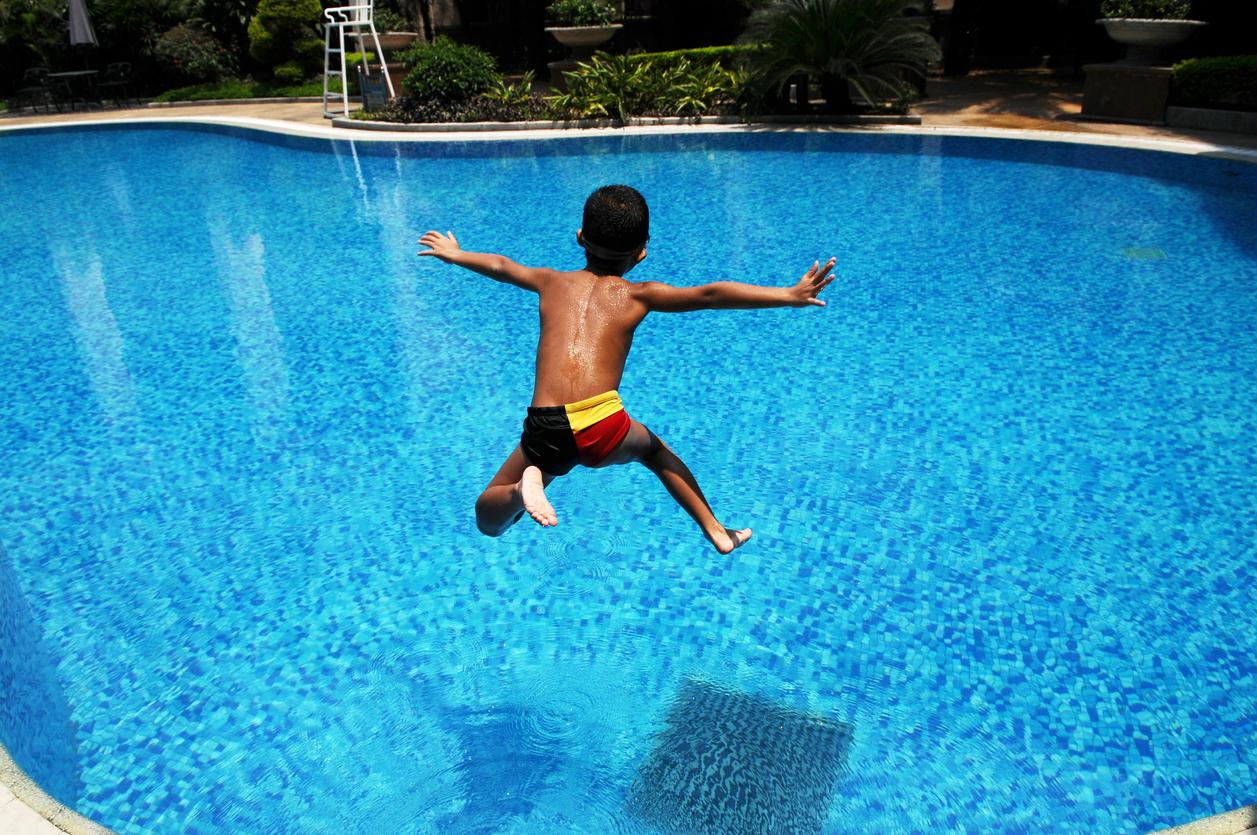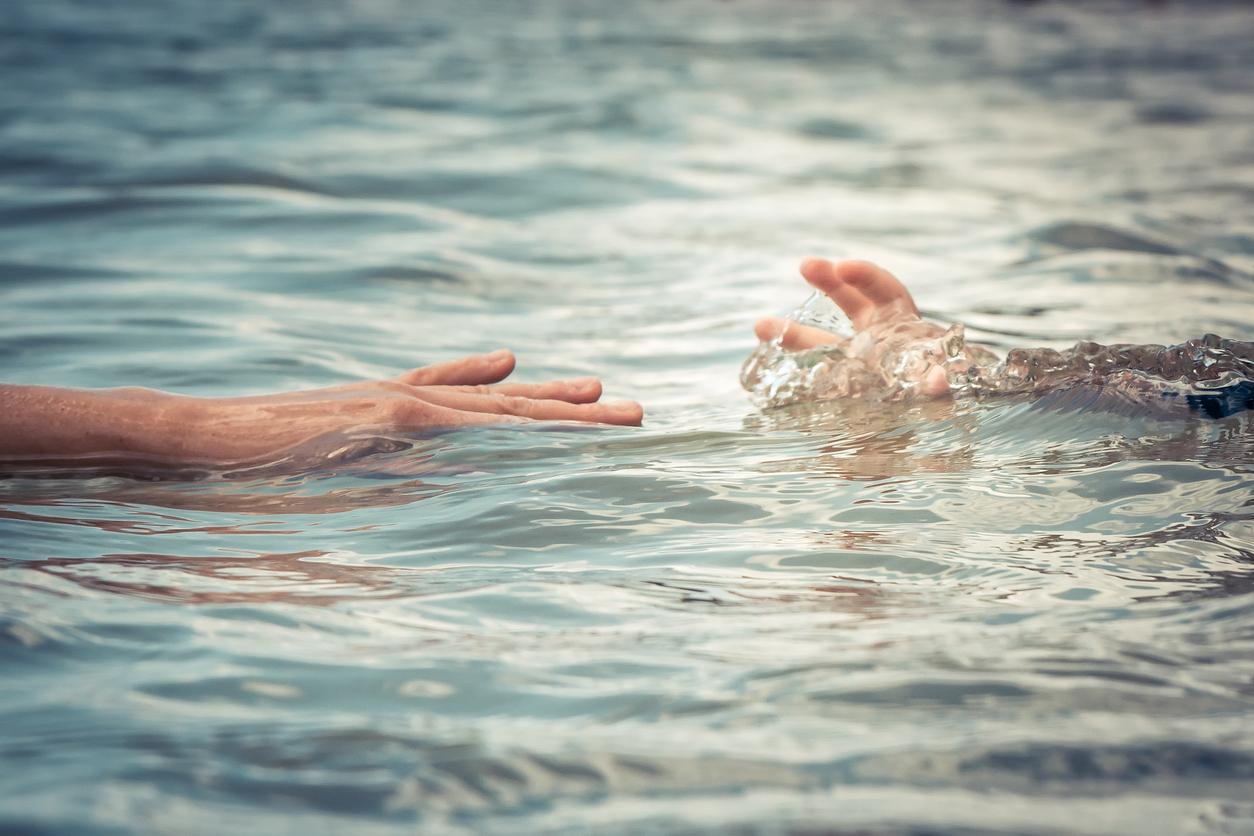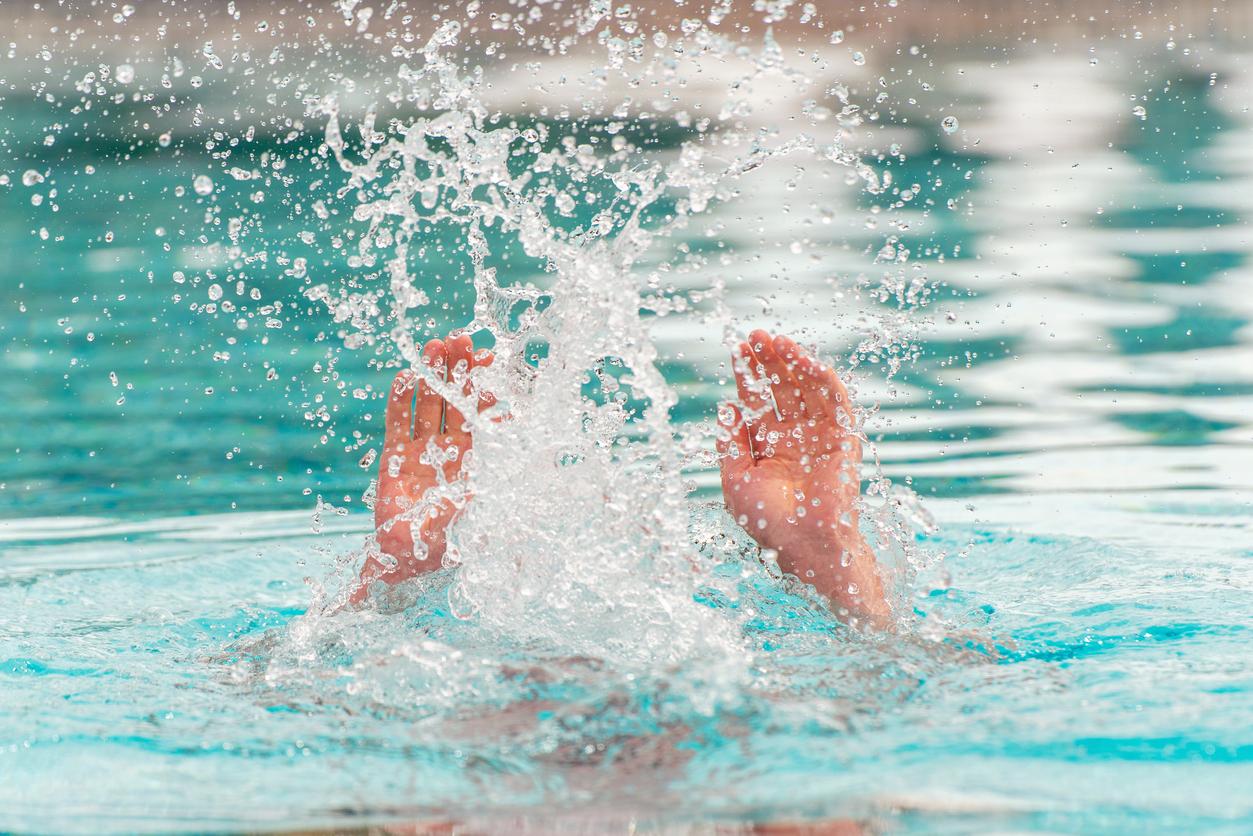Dry drowning occurs out of water, maximum 72 hours after drinking the cup or avoiding drowning. It particularly affects children. To help them in time, it is important to know the signs.

- Dry drowning occurs a maximum of 72 hours after drinking the cup or avoiding drowning.
- Symptoms can be similar to an asthma attack, cause stomach aches, fever, a gray complexion or pronounced drowsiness.
- Dry drowning mainly affects children, it is important to watch them carefully, especially in private swimming pools.
What is not well known is that dry drowning (or delayed drowning) occurs out of water. I’World Health Organization (WHO) defines it as “death by suffocation following immersion in water”. It is, more precisely, a respiratory failure caused by a recent immersion in a liquid. Drinking from the cup or avoiding drowning can be fatal hours or even days (up to 72 hours later) after swimming.
The WHO distinguishes between two types of drowning: dry drowning and wet drowning. “In wet drowning, the person has inhaled water which interferes with breathing and causes the circulatory system to collapse. In less common cases of dry drowning, the airway closes due to spasms caused by the presence of Near drowning can cause neurological damage and successful recovery depends on prompt rescue and resuscitation.”
In June 2017, a 4-year-old child in Texas, USA died from dry drowning. “Suddenly he woke up. He screamed. He took his last breath and I didn’t know what to do anymore”his father told the news site Eyewitness News. These accidents represent 2% of drownings and almost exclusively concern children. Knowing how to recognize the signs of dry drowning is essential because emergency medical intervention can save your life.
Knowing how to identify the signs of dry drowning
The first signs of dry drowning are coughing and difficulty breathing (wheezing). These symptoms resemble those of an asthma attack. Belly pain, fever, gray complexion or severe drowsiness require vigilance. “When water enters the lungs, they can fill with blood because the water damages the surfactant (substance that covers the pulmonary alveoli, editor’s note) which normally separates air and blood” explain to 20 minutes Dr Gwënaelle Huet, general practitioner in Perros-Guirrec. “If the person just drank the cup and coughed well and there are no other symptoms, there is no need to worry. If there has been a drowning, call the 15th and listen to their advice”.
But be careful not to dramatize. Not every person drinking the cup subsequently develops respiratory failure. However, if you have the above symptoms, you should seek urgent medical attention with a clear description of what happened in the water. In case of respiratory failure, you will receive oxygen.
Take good care of your children
“In children, failure of adult supervision is the single most important cause of drowning. reminds the WHO. However, observing a few simple precautions can reduce risk. It is recommended :
– Always stay close to your children when they are playing near or in water;
– Bathe with them to intervene immediately if necessary;
– Designate only one adult to supervise to avoid misunderstandings or lack of attention.
When children cannot swim, they should be equipped with armbands when near water. On the other hand, buoys or other floating objects (inflatable boats, mattresses) are not effective. It is also recommended that you teach your child to swim as early as possible: from the age of 4 or 5 if he has the physical capacity and the desire to do so, otherwise generally from the age of 6.
Watch out for private pools
Drowning is the first cause of accidental death in the daily life of minors under the age of 15. According to a survey published by Public health Francetwo-thirds of drownings in children under the age of six occurred in private swimming pools.
Thus, the law stipulates that private swimming pools must be equipped with protective devices to prevent children from entering them: barriers (the best solution), shelters or swimming pool covers. An audible alarm can also warn you of a fall, but it will not prevent drowning. However, monitoring remains the best form of prevention.















